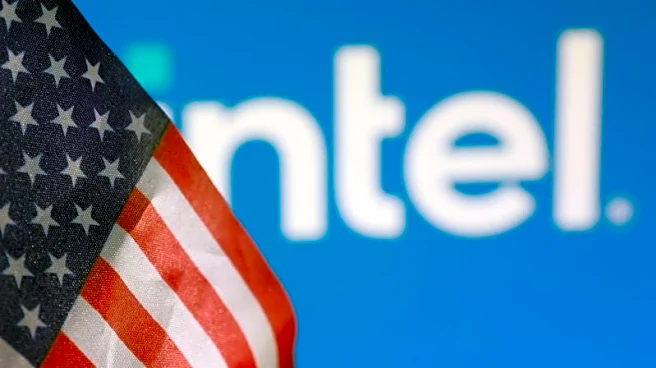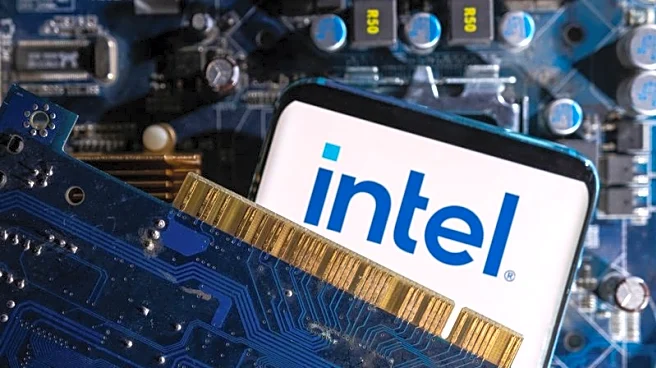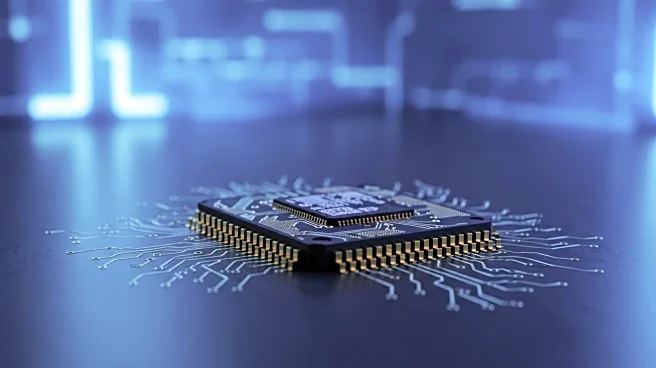What is the story about?
What's Happening?
The US government has acquired a 10% equity stake in Intel, a major American chipmaker, as part of a strategic move to bolster domestic chip manufacturing. This decision, announced by President Trump and Commerce Secretary Howard Lutnick, involves a $10 billion investment, aligning with the funds Intel is set to receive under the Chips and Science Act. This act aims to enhance the construction of chip plants within the United States. Intel, which has been experiencing financial difficulties, including a significant loss in 2024, views this government intervention as a pivotal opportunity to rejuvenate its business. The stake, although non-voting, is intended to aid Intel in competing with global industry leaders such as TSMC. This move is part of a broader initiative by the Trump administration to strengthen the US's position in the global semiconductor market.
Why It's Important?
This acquisition underscores the US government's commitment to securing a competitive edge in the global semiconductor industry, which is crucial for national security and technological leadership. By investing in Intel, the government aims to reduce reliance on foreign chip manufacturers and ensure a stable supply chain for critical technologies. This move could potentially lead to increased job creation and technological innovation within the US, benefiting the economy and enhancing national security. However, it also raises questions about government involvement in private sector operations and the implications for corporate governance and market competition.
What's Next?
The acquisition is expected to accelerate Intel's efforts to expand its manufacturing capabilities in the US, potentially leading to the establishment of new chip plants. This could prompt other tech companies to seek similar government partnerships or investments. Additionally, the move may influence policy discussions around government intervention in strategic industries, potentially leading to further legislative actions to support domestic manufacturing. Stakeholders, including industry leaders and policymakers, will likely monitor the outcomes of this investment closely to assess its impact on the US semiconductor landscape.
AI Generated Content
Do you find this article useful?












